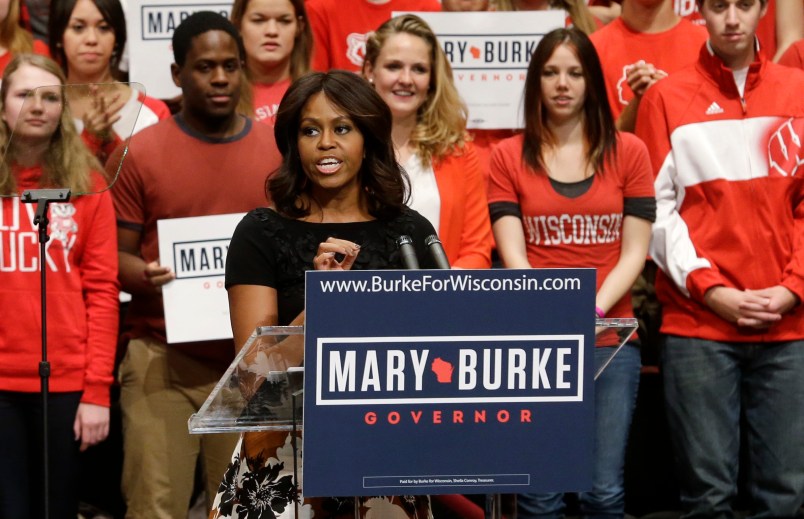On Election Day, the pro-choice Democratic women’s fundraising group Emily’s List went on twitter, proclaiming #womendecide. But women did not decide 2014. While women comprise 53 percent of registered voters, vast numbers of women — particularly poor women, young women, and women of color — stayed home. These no shows happened despite the Democrats’ vaunted 50 million dollar Bannock Street Project to turnout voters.
As both parties turn to 2016, both parties need a rethink. Democrats cannot take for granted that a Hillary Clinton candidacy will bring out the women voters who stayed home in 2014. On the other side, Republicans should worry, too, since women voters may well come out in force in 2016, like they did in 2008 and 2012.
Perhaps women didn’t vote because of the veritable silence from politicians on policies that address key challenges women face today. 2014 is not 1964. While a woman’s right to choose is still an issue, economics are crucial, too. Today, women are just about as likely to be employed as men. Most women participate in the labor force. Moms work especially hard –some 70 percent of women with children under 18 have jobs outside the home. And while men have begun to increase the amount of time they put into taking care of family members, women still do the majority of that work as well. And women on average are paid less for each hour they work than men in comparable jobs – and women have less money in their bank accounts and carry more debt.
So, what policies could enable women and their families to thrive?
Paid family and medical leave. Millions of workers have no paid time off to cope with their own illness or care for sick family members. Millions more lack paid maternity and paternity leave following the birth or adoption of a child.
- Universal child care and early education. High quality programs are essential for children in the first few years of life – and help women handle economic and career demands while still knowing their children are safe and learning.
- A fair minimum wage. Two-thirds of minimum wage and sub-minimum wage tipped workers are women. On Tuesday, several states voted to raise their minimum wages. If more do so, the increases would immediately put money in the pockets of working moms, reducing the need for government services.
- Fair pay. For every dollar a man makes, most women earn 84 cents or less.
- Affordable higher education and effective job training. Higher education and advanced workforce training are important means by which women can get ahead and make a good living.
Men would also benefit men from these policies, since men also get sick, take care of children, want to make decent wages, and need education and training. And these polices would benefit American families, as they increase family income and help parents spend more time with family members, while enhancing economic opportunities, especially for those that have seen the least gains with economic growth.
As importantly, these policies make economic sense. They would improve the nation’s human capital through better health and education, which enriches us all but also makes us more competitive as a nation. By the way, most of these policies are already in place in many of other countries, including Canada and most European countries.
America’s women work. They need policies that help them combine employment with family responsibilities, that improve the educational and health care needs of themselves and their families, and that promote equal pay for equal work. If Democrats are hoping to see women vote in big numbers in 2016 – and if Republicans want to finally break into this core Democratic demographic – both parties better rethink their approach to women.
Randy Albelda is a professor of Economics at the University of Massachusetts, Boston. Luisa S. Deprez is a professor of Sociology and former Dean of the College of Arts and Sciences at the University of Southern Maine. Avi Green is Director of Civic Outreach at the Scholars Strategy Network.






